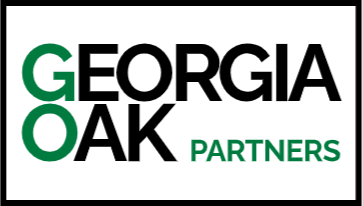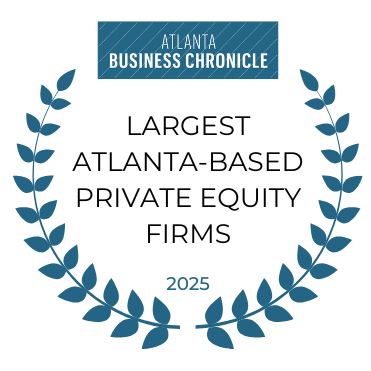Insights
NEW FEATURES BY DATE
List of Services
-
12/9/2025 Building Resilient Companies in a Complex Market: Quotes from Dean Ditmar12/9/2025
-
7/25/2025 Scaling with Intention: Growth Lessons from the Front Lines7/25/2025
-
6/6/2025 How to Position Your Brand for Acquisition: A Marketing Playbook for Sellers6/6/2025
-
4/16/2025 Cultivating a Culture of Accountability and Empowerment4/16/2025
-
1/1/2025 Case Study: Preserving Legacy While Driving Growth through Minority Deals1/1/2025
-
5/20/2024 Georgia Oak Associate Job Description5/20/2024
-
3/4/2024 1851 Franchise: "Private Equity and Sports: The MVP Playbook"3/4/2024
-
9/21/2023 (Atlanta Business Chronicle) Atlanta Braves legend joins Georgia Oak Partners9/21/2023
-
4/11/2022 Can You Raise Prices in This Market? If Not, When?4/11/2022
-
12/18/2021 Putting People First12/18/2021
-
6/30/2021 Staffing Industry Insights6/30/2021
-
3/18/2021 Remote Work: A Permanent Part of Every Industry3/18/2021
-
2/4/2021 A Year of Growth: Focusing on Human Capital in 20212/4/2021
-
8/27/2020 COVID-19 Leadership with Page Siplon, CEO of TeamOne Logistics8/27/2020
-
8/27/2020 Culture Shifts During COVID-19 and Beyond8/27/2020
-
7/23/2020 Georgia & National Labor Market Trends: A Look at Six Key Industries7/23/2020
-
7/23/2020 Miked Up: Organizational Diversity - Volume 2, Part 17/23/2020
-
6/16/2020 Virtual Communication in Uncertain Times6/16/2020
-
6/16/2020 Harnessing the Power of Technology6/16/2020
-
5/27/2020 Miked Up: Volume 1, Part 15/27/2020
-
5/6/2020 The Front Lines of Business Continuity5/6/2020
-
5/6/2020 Navigating the New Normal5/6/2020
-
1/8/2020 Build Successful Teams with These 5 Elements1/8/2020
-
6/5/2019 Minority vs. Majority Deals6/5/2019
-
3/1/2019 Video Case Study: Sailfish Boats3/1/2019
-
11/28/2018 What Is Your Legacy?11/28/2018
-
9/7/2018 Recruiting and Retaining Manufacturing Talent9/7/2018
-
4/5/2018 Navigating the Sale Process: From LOI to Post-Close4/5/2018
-
10/18/2016 Selling to Your Management Team10/18/2016
A Year of Growth: Focusing on Human Capital in 2021
As our partners across industries search for ways to move forward from the trials and tribulations of 2020, we’re seeing an increased focus on developing and supporting people – well beyond the human resources function or the staffing industry. From technology, manufacturing and logistics, to hospitality and healthcare, human capital is more important than ever. Identifying and retaining the right people in the right jobs is as essential to surviving in uncertain times as it is to thriving in the future.
Putting Employees First Across the Org Chart
We’ve spent several months focusing on recruiting and retaining the right people in key leadership roles. Since one of our specialties at Georgia Oak is to assist our partners in filling those roles, we have deep expertise in the importance of making the right choices for the executive team.
But the importance of focusing on people goes well beyond the C-Suite. Strong team leadership and company culture is as important on the factory floor and the hospital hallways as it is in the corner office. By expanding your people-first focus to include the full spectrum of human resources, you increase both the opportunities and the strength to leverage toward success.
Employee Retention
Perhaps one of the most overlooked aspect of keeping a business healthy, employee retention rarely gets the attention it deserves from company leadership. What’s more, the attention focused in this area is often based on misguided assumptions or a lack of understanding what is important to workers.
According to Adam Borstein of Entrepreneur:
"Entrepreneurs know how to make customers happy: We learn their needs and then create products and services to match. But too often, we don’t do the same thing with our employees. We make incorrect assumptions about what workers value—and, in the process, overlook what will give them long-term."

Contrary to supply-and-demand management wisdom, wages, salary and profit-sharing bonuses are often loosely related (at best) to a strong employee retention policy. Take-home pay ranks high as a consideration with most workers when deciding whether to accept a position, and a lack of equitable or steadily increasing pay can certainly be a factor in employee discouragement. It turns out, however, that the reverse isn’t necessarily true. A competitive pay scale or even frequent increases in pay based on performance don’t necessarily lead to employee retention or loyalty.
So, what does keep people around?
According to Thomas Smale, writing for Entrepreneur, the 4 keys are growth opportunities, recognition of not only achievement but effort, flexibility and a healthy work environment. Each of these constructs will be translated differently depending on the industry and job function – flexibility, for example, looks different in a manufacturing plant than it does on a software development team. Looking for tangible ways to incorporate these motivations into your employee retention plan, however, will enhance your competitiveness as an employer and improve productivity and loyalty among current employees.

Employee Satisfaction
Employee Retention and Satisfaction are related concepts, but not interchangeable. Job Satisfaction is one of many reasons employees will stay with a company, but it also has implications for the quality of work a person produces, as well as the extent to which her job integrates with her life, health and overall well being.
Many of us assume that if we find interesting and fulfilling work, and are paid well (or at least fairly), our job satisfaction will be high. An extensive meta-analysis of job satisfaction studies conducted at the University of Houston, however, concludes that the people with whom we work has a much greater impact on job satisfaction than previously assumed.
Kevin Hoff, assistant professor of industrial-organizational psychology, notes in the Journal of Vocational Behavior:
“Our main finding was that interest fit significantly predicts satisfaction, but it's not as strong of a relation as people expect…Other things that lead to satisfaction include the organization you work for, your supervisor, colleagues and pay.”
The lesson here for company leaders is that culture matters. Recruiting and supporting supervisors and managers with whom employees enjoy working—and creating an environment in which workers feel connected, valued, and appreciated—may have far-reaching personal and professional impact.
Performance, Compensation and Benefits
None of this is to say that compensation is irrelevant. In fact, fair and productive evaluation of performance is one of the most efficient ways to help employees understand their roles, attributes, and paths to growth. Performance evaluations provide essential data for the company and workers alike. They ensure that employees receive acknowledgement for their contributions and additional training or support in areas where they are struggling. They also provide an opportunity for both employee and manager to verbalize what they see (or hope to see) on the path ahead.
While performance is not always tied to compensation, the two are part of a critical two-pronged approach to ensuring that employees receive compensation that is not only competitive but targeted to acknowledge their contributions and grow with their careers.

Tying it all Together: Organizational Development
As you may have already guessed, none of these critical areas of personnel development can exist in a vacuum, or be championed by a single person or department (even if that person is the company’s founder or CEO). To function as a healthy system, the tenets of employee retention, satisfaction and performance must be integrated into the heart and soul of the company culture.
This requires a knowledge of, and attention to, Organizational Development—especially in the company’s early years. Your company’s purpose, and its commitment to its employees, must be woven into the structure of the organization itself: from the onboarding process for new employees to conflict resolution and meeting culture.
In this respect, 2021 presents an opportunity for companies of all sizes, to reinvent themselves with the structure and culture that will serve them best in the future.

Links & Resources
• 3 Ways to Retain Your Top Employees: https://www.entrepreneur.com/article/348230
• Employee Retention: 4 Tips https://www.entrepreneur.com/article/361293
• Job Satisfaction (Forbes): https://www.forbes.com/sites/alisonescalante/2020/11/17/your-job-satisfaction-may-have-more-to-do-with-who-you-work-with-than-what-you-do/
• Job Satisfaction – University of Houston Study: https://uh.edu/news-events/stories/2020/november-2020/11112020-kevin-hoff-interest-job-satisfaction.php
• Tracking Performance: https://www.businessnewsdaily.com/15967-how-to-evaluate-employee-performance-.html
• Organizational Development: https://www.entrepreneur.com/article/362895
• Investors and Human Capital: https://www.financialexecutives.org/FEI-Daily/January-2021/What-Investors-Are-Looking-for-in-Human-Capital-Ma.aspx
• Why 2021 is the Year of Change: https://hrexecutive.com/sage-gavin-why-2021-is-the-year-of-change/
At Georgia Oak, we’re committed to enhancing your business and helping founders grow their legacies
to their fullest potential. If you find we’re a good fit for your next step, please reach out to us.



